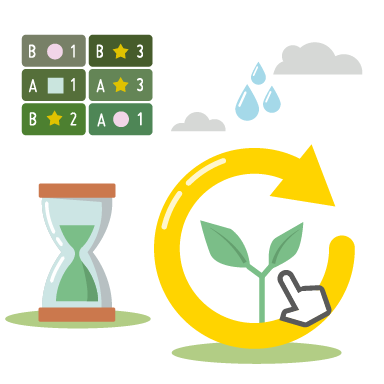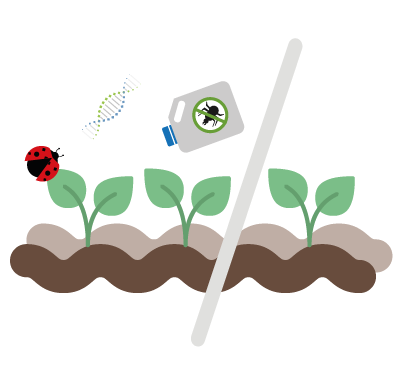Best practices – Pest and disease management trials
Introduction
Pest and disease management trials are essential for evaluating the efficacy of various control methods and products in combating agricultural pests and diseases. These trials provide valuable information for agronomists, researchers, and farmers to improve crop protection strategies and increase agricultural productivity. This article discusses the best practices for designing and conducting pest and disease management trials, emphasizing the role of QuickTrials in streamlining the process.
Trial design and planning
A well-planned trial design is crucial for obtaining reliable and statistically valid results. Here are some important factors to consider:
1. Objectives and hypotheses

Clearly define your trial objectives and hypotheses to guide the selection of treatments, experimental design, and data collection.
2. Treatments

Include a range of treatments, such as chemical, biological, and cultural control methods, as well as untreated control plots for comparison.
3. Experimental design

Opt for randomized complete block designs, split-plot designs, or other suitable designs depending on the trial objectives and constraints. QuickTrials can be a valuable tool in the trial design phase, offering features to help you design randomized and replicated trials with ease.
4. Replication

Conduct multiple replications of each treatment to account for random variation and improve the reliability of the results.
Data collection and management
Accurate data collection and efficient data management are vital for successful pest and disease management trials. Follow these guidelines:

1. Consistent data collection methods:
Establish standardized protocols for data collection and ensure all team members adhere to them.

2. Plan site visits:
Schedule field staff visits to each site at the most appropriate times (Eg. specific growth stage) or intervals. A trial management tool like QuickTrials can make it easier to plan, coordinate and monitor visits.

3. Digital data collection tools:
Utilize digital platforms, such as QuickTrials, to collect, store, and manage data efficiently and securely. QuickTrials allows observations to be recorded and validated directly on mobile devices, minimizing errors, saving time and streamlining the data management process.

4. Relevant data parameters
Collect data on pest and disease incidence and severity, as well as other relevant agronomic traits. Additionally, record environmental data to better understand the impact of external factors on pest and disease dynamics.

5. Monitor and validate:
Monitor and validate the data collection to identify any data gaps or outliers. This should be done as soon as possible so that corrective actions (Eg. revisit if measurements were missed or resample in case of outlyers) can be undertaken to ensure a complete and successful trial. QuickTrials enables trial coordinators to centrally verify collected data in near real-time, allowing for immediate feedback or coordination of corrective actions.
Data analysis and interpretation
Analyzing and interpreting trial data accurately is essential for drawing meaningful conclusions. Consider these recommendations:
1. Employ suitable statistical methods:
Use appropriate statistical tools to analyze the data, determine the significance of observed differences between treatments, and identify interactions between factors.
2. Assess treatment efficacy under various conditions:
Evaluate treatment performance under different environmental conditions and management practices to identify the most effective strategies for specific contexts.
3. Generate practical recommendations:
Translate trial results into actionable insights for farmers, researchers, and other stakeholders to implement in their pest and disease management practices.
QuickTrials provides built in data analysis and visualization tools, as well as supporting many 3rd party tools and integrations. It provides a powerful, coherent foundation from which trials can be analysed consistently across an organisation.

Communication and dissemination
Effectively communicating trial results is crucial for promoting their adoption in the field. Keep the following points in mind:

1. Adapt your message
Present trial findings in a format that is easy to understand and relevant to your target audience, using clear language and visuals.

2. Utilize digital platforms:
Leverage websites, social media, and other digital channels, to share trial results and engage with stakeholders.

3. Seek feedback:
Encourage feedback from stakeholders to refine the design and execution of future trials and improve pest and disease management strategies.







